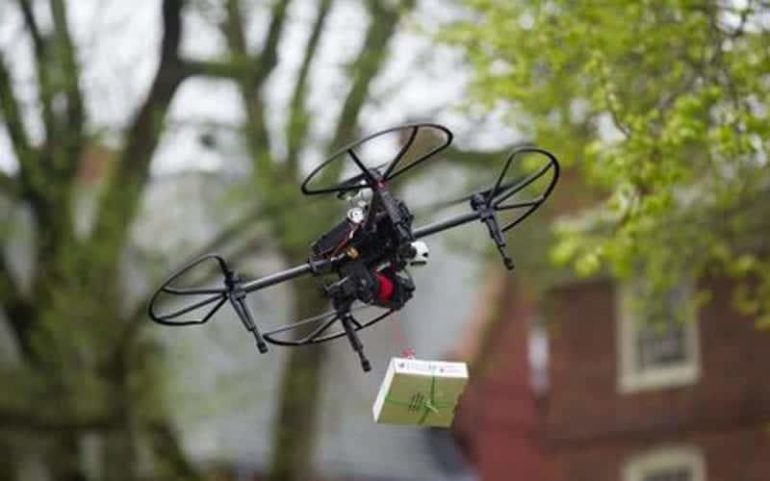A developer of a tethered freefall drone delivery mechanism recently completed the first commercial deployment of its so-called rapid delivery system. A2Z Drone Delivery, LLC, partnered with drone services provider DroneUp to make residential package deliveries in Coffee County, GA, using A2Z’s tethered delivery system to safely land packages on the ground.
Drone delivery is coming, but there are some prickly safety problems to solve before residential deliveries can become a possibility in the eyes of legislators. Drones have rotors that spin very fast and are very dangerous, to name one big one. As drone delivery continues to expand in the US, the industry is looking for ways to mitigate consumer concerns about safety and the detrimental impact low-flying drones could have on tranquility and privacy. The A2Z rapid delivery system, dubbed the RDS1, is an effort to address these concerns. By rapidly delivering payloads via tether from cruising altitude, the RDS1 is meant to keep drones away from people, property, trees, and utility wires. It could also make deliveries faster for logistics companies.
“With the innumerable logistics that go into residential drone delivery, it’s important to have confidence in every aspect of the hardware from the UAV platform to the delivery mechanism,” says John Vernon, the CTO of DroneUp. “The RDS1 allows our pilots to reduce time-on-station to about 30 seconds per delivery. Combined with the ability to make deliveries from cruising altitude, this rapid delivery and the integrated safety features in the tether system itself help us assuage some of the public concerns over UAV delivery.”
The system relies heavily on automation. For example, an automated pre-flight weight check ensures proper weight distribution on the flight platform and the RDS1’s built-in payload status detection monitors track the payload throughout flight and delivery. Manual delivery control is backed up by intelligent safeguards that calculate the payload freefall and when to slow the descent to the ground, while a passive payload lock protects against package loss in the event of a power fluctuation. Should the UAV experience an emergency, the payload and tether can be abandoned to save the aircraft and protect the safety of people and property on the ground.
“No matter how many flight hours you have as a UAV pilot, adding the dynamic of delivering packages to the ground is still a new concept, so having the tether controls seamlessly integrated into the pilot software is imperative,” says DroneUp pilot Ethan Burnette, who flew delivery missions with the RDS1. “Also, knowing the redundant safety systems are in place gives you the added peace of mind you need as you become accustomed to flying a drone with a payload slung below it.”
Whether package-carrying tentacles descending from the sky will become a widespread reality or not remains to be seen, but given the safety concerns with UAV landing in populated areas it may not be as far fetched as it initially sounds. Currently, regulatory environments in places like the U.S. present the biggest hurdle to drone delivery, though there are signs the FAA is becoming more comfortable with the idea.



